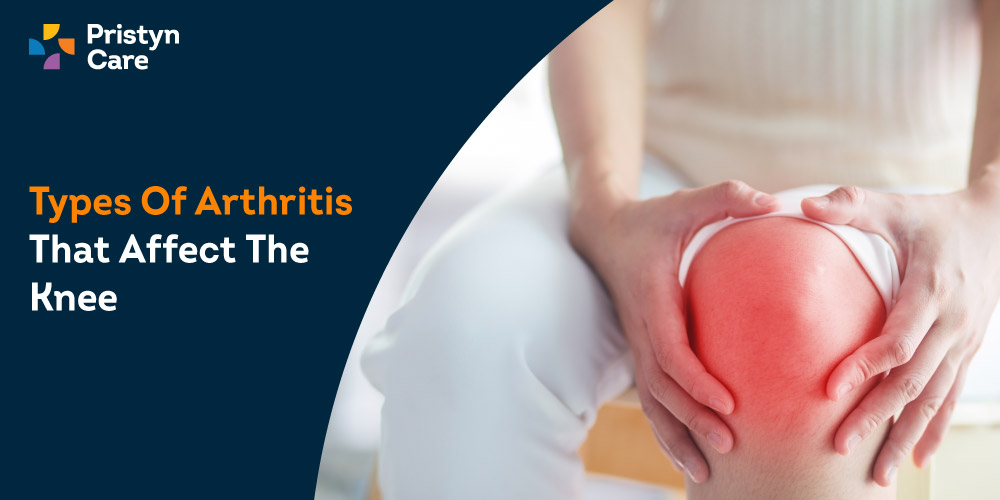
Arthritis is a common condition that causes inflammation of a joint, which results in pain, stiffness, and loss of motion in some cases. Arthritis is a relatively common condition in India and affects 15% of people, i.e., over 180 million people in India. There exist about 100 different types of arthritis, out of which some are very common, and others are extremely rare. The most common signs of arthritis are pain, swelling, stiffness, reduced range of motion, etc.
Types of Arthritis
There are different types of arthritis, including
- Osteoarthritis: It is the most common type of arthritis and affects millions of people worldwide. It is a degenerative disease that causes the deterioration of the cartilage in the joints, resulting in pain, stiffness, and inflammation. There are different options to manage osteoarthritis, but there is no permanent cure for the condition. The goal of treatment is to relieve pain and improve quality of life. Weight loss, exercise, and pain relief medication can all help to manage symptoms of arthritis.
- Rheumatoid Arthritis: Rheumatoid arthritis (RA) is a chronic autoimmune disease that causes inflammation of the joints. The common symptoms of RA are joint pain, stiffness and swelling.
It can also cause fatigue, loss of appetite, and weight loss. There is no known cure, but treatment can help to control the symptoms of RA and prevent further damage to the joints.
- Psoriatic Arthritis: Psoriatic arthritis is a type of inflammatory arthritis that usually affects people with psoriasis. Psoriasis is a condition that causes patches of thick, red skin and silvery scales. People with psoriatic arthritis often have joint pain, stiffness, and swelling. They may also have fatigue, eye problems, and nail changes. There is no cure for psoriatic arthritis, but treatment options include anti-inflammatory medications, disease-modifying antirheumatic drugs (DMARDs), biological agents, and physical therapy.
- Gout: Gout is a type of arthritis that usually affects the joints, typically the big toe. It is caused by the buildup of uric acid in the body, which can be the result of a diet high in purines or certain medical conditions. Some common symptoms of gout include sudden, severe joint pain, swelling, redness, and warmth. The treatment focuses on reducing the amount of uric acid in the body and relieving symptoms of arthritis.
- Juvenile Arthritis: Juvenile arthritis is a long-lasting, chronic disease. It is the most common form of arthritis in children. It is a condition which encompasses’ 100’s of other autoimmune and inflammatory conditions such as Juvenile idiopathic arthritis (JIA), Juvenile dermatomyositis, Juvenile lupus, Juvenile scleroderma, etc. The symptoms of JA may vary for each type, however, some common symptoms include.
- Limping, inability to perform motor skills efficiently
- Joint stiffness, especially in the morning
- Pain, swelling, and tenderness in the joints
- Persistent fever
- Irritability
- Weight loss
- Rash
- Fatigue
- Lupus: It is a complex autoimmune disorder that destroys healthy tissue and can affect lungs, kidneys, brain, skin and blood vessels in addition to joints. Lupus patients are at an advanced risk for atherosclerosis, seizures and strokes. Symptoms include fevers, fatigue, skin rashes, joint swelling and pain. In the most serious cases, Lupus can be fatal.
- Ankylosing Spondylitis: It is a type of arthritis that, if left untreated, can lead to the fusing of spine vertebrae. It can cause immobility issues, posture challenges and difficulty breathing. Some common symptoms of ankylosing spondylitis includes hip pain, joint pain, neck pain, fatigue, etc.
Treatment of Different Types of Arthritis
The treatment options for arthritis depend on the type of arthritis and the severity of the condition. Some common treatment options include:
- Medications: It includes nonsteroidal anti-inflammatory drugs (NSAIDs), corticosteroids, and disease-modifying antirheumatic drugs (DMARDs). Medication helps in reducing inflammation and pain.
- Physical therapy: It helps in improving joint function and range of motion.
- Occupational therapy: It helps in performing daily tasks more easily
- Surgery: An orthopedic doctor usually recommends surgery when other conservative measures don’t help:
- Joint repair: In some cases, joint surfaces can be smoothed or realigned to improve function and reduce pain. This procedure often performed arhtroscopically, through small incisions over the joint.
- Joint replacement: It helps in removing the damaged joint and replaces it with an artificial one.
- Joint fusion: It is commonly used for smaller joints, such as those in the wrist, ankle and fingers. It removes the end of the two bones in the joint and then locks those ends together until they heal into one rigid unit.
Prevention of Arthritis
The best way of preventing arthritis is by maintaining a healthy lifestyle and keeping your joints healthy. Listed below are some tips for preventing arthritis:
- Exercise regularly: It helps in keeping your joints strong and flexible.
- Maintain a healthy diet: It helps in reducing inflammation throughout your body, which can lead to arthritis pain.
- Avoid injury to your joints: It includes avoiding activities that put too much stress on your joints, or that may cause you to fall.
- Get regular checkups with your doctor: Regular checkups help in detecting any early signs of arthritis so that they can be treated before they become more serious.
Arthritis is a common condition that affects millions of people around the world. If you are experiencing joint pain or stiffness, be sure to talk to your healthcare provider to determine if you have arthritis and to discuss the best treatment options.















